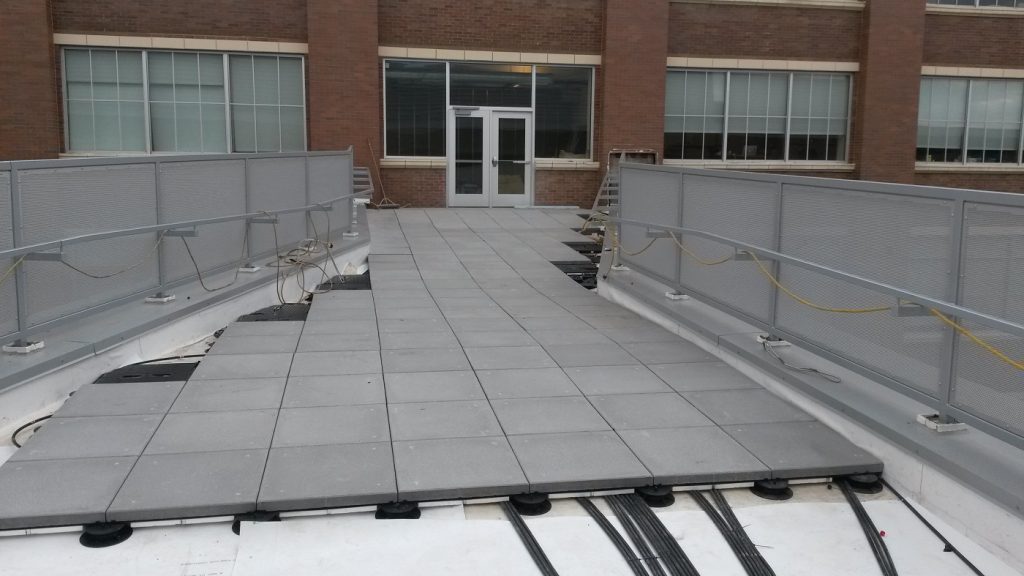According to the International Code Council (ICC), a ‘means of egress’ refers to the path for a person to leave a building, structure, or space. A means of egress consists of three separate and distinct parts: the exit access, the exit, and the exit discharge. In layman’s terms, these components are the path of travel to an exit, the exit itself, and the path to a safe area outside.
Building codes determine how means of egress need to be maintained. However, due to the nature of building codes, and the ability of cities to enact their own set of codes, the required maintenance could vary depending on what city, state, or jurisdiction the building is in. Currently, The International Building Code (IBC) is in use or adopted in 50 states, the District of Columbia, Guam, Northern Marianas Islands, New York City, the U.S. Virgin Islands, and Puerto Rico. States either adopt the IBC standard or use a model or variation based on a previous version, which is updated every three years. For means of egress maintenance, the IBC references The International Fire Code (IFC). The IBC addresses fire prevention in regard to construction and design and the IFC addresses fire prevention in regard to the operation of a completed and occupied building. For example, the building code sets criteria for the number, size, and location of exits in the design of a building while the fire code requires the exits of a completed and occupied building to be unblocked.
In the latest edition of the IBC (2018), Chapter 10 refers to the Means of Egress. In section 1002.1 Maintenance, the code specifies, “Means of egress shall be maintained in accordance with the International Fire Code.” So, we must look to the referenced IFC manifest to determine the actual requirements.
In the latest edition of the IFC (2018), Chapter 10 also refers to the Means of Egress. Maintenance is found in section 1031.3. Specifically, section 1031.3 explains the code regarding obstructions, and states, “A means of egress shall be free from obstructions that would prevent its use, including the accumulation of snow and ice.”

For an architect, this means that egress needs to be designed in a way that corresponds with the code while maintaining aesthetic appeal and utility. Pedestal mounted pavers are a very common solution for creating a finished surface on rooftop terraces, patios, and walkways. The pedestals elevate the deck surface above a waterproofing membrane. The only problem with a pedestal system, if used as a means of egress, is keeping it snow and ice-free.
“…shall be free from obstructions that would prevent its use, including the accumulation of ice and snow.”
Perhaps the biggest issue is defining what an “obstruction that would prevent its use” is. We know firsthand that pedestal pavers, moisture, and freezing temperatures do not mix well. Frozen morning dew creates an extremely slick and dangerous walking surface. How can design ensure that proper maintenance takes place? By taking these issues into account and specifying the means of maintenance from the start, any issues regarding code and safety can be avoided.
ThermaPANEL is the only engineered hydronic solution specifically designed to handle snow and ice melting of pedestal pavers. With automated system controls, means of egress will remain snow, ice, and frost-free, as building code requires. Not only does it help a designer or architect meet standard building codes, but it allows them to reclaim valuable space adding even more value to outdoor spaces which adds New Dimensions to Design.
For more information about ThermaPANEL systems download our brochure. To discuss a project you are working on that may benefit from a pedestal paver snow melting system, contact us today.
